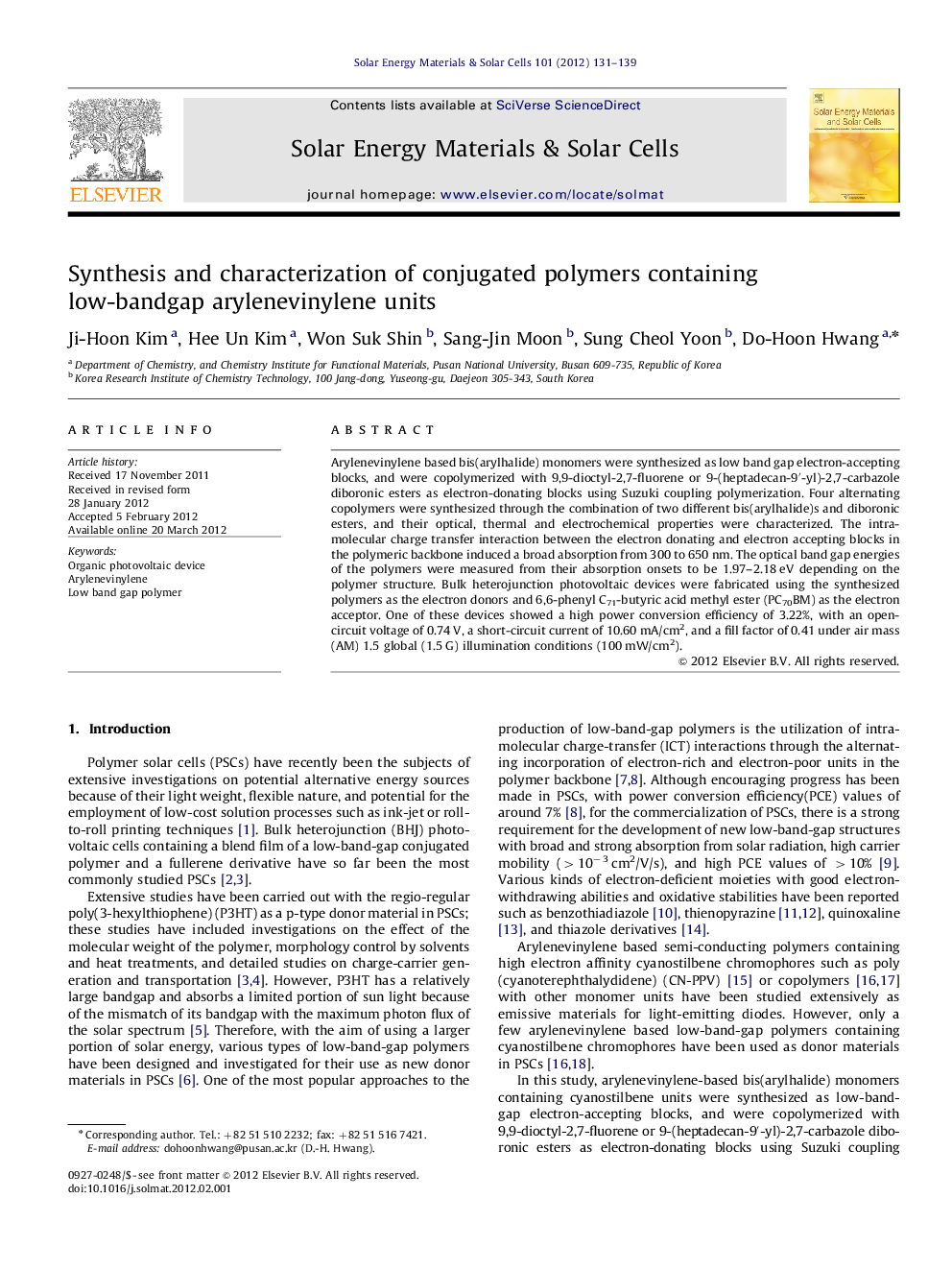| Article ID | Journal | Published Year | Pages | File Type |
|---|---|---|---|---|
| 79286 | Solar Energy Materials and Solar Cells | 2012 | 9 Pages |
Arylenevinylene based bis(arylhalide) monomers were synthesized as low band gap electron-accepting blocks, and were copolymerized with 9,9-dioctyl-2,7-fluorene or 9-(heptadecan-9′-yl)-2,7-carbazole diboronic esters as electron-donating blocks using Suzuki coupling polymerization. Four alternating copolymers were synthesized through the combination of two different bis(arylhalide)s and diboronic esters, and their optical, thermal and electrochemical properties were characterized. The intra-molecular charge transfer interaction between the electron donating and electron accepting blocks in the polymeric backbone induced a broad absorption from 300 to 650 nm. The optical band gap energies of the polymers were measured from their absorption onsets to be 1.97–2.18 eV depending on the polymer structure. Bulk heterojunction photovoltaic devices were fabricated using the synthesized polymers as the electron donors and 6,6-phenyl C71-butyric acid methyl ester (PC70BM) as the electron acceptor. One of these devices showed a high power conversion efficiency of 3.22%, with an open-circuit voltage of 0.74 V, a short-circuit current of 10.60 mA/cm2, and a fill factor of 0.41 under air mass (AM) 1.5 global (1.5 G) illumination conditions (100 mW/cm2).
► Arylenevinylene based semi-conducting polymers were synthesized for use in organic solar cells. ► Optical, thermal and electrochemical properties of the polymers were characterized. ► The optical band gap energies of the polymers were measured to be 1.97–2.18 eV. ► One of fabricated devices showed a power conversion efficiency of 3.22 %.
